Right now I’m digging into JAL Miles and before I do a post on the best uses, I wanted to give an overview of their four award charts.
I have made condensed, easier to read charts and a map for JAL flights, and will generally explain which award chart you use for which redemption.
I also made a chart showing which chart is better under which distance range, the JAL Miles “OneWorld Award Chart” or the “Partner Award Chart”.
I’ll give a list of partners, and a brief overview of the rules.
The 4 Award Charts:
1) The JAL Miles “OneWorld Award Chart”
This award chart is used when you’re redeeming JAL Miles to fly on any two or more airlines, including JAL.
2) The JAL Miles “Partner Award Chart”
This is when you fly one single partner (which doesn’t include JAL).
This does include all non-alliance airlines, because they simply can not be booked in combination with other partner airlines. Thus, they can only use this award chart.
But even if you use your JAL Miles for a single OneWorld partner, it would fall under this award chart.
3) The JAL Miles “JAL Award Chart”
This award chart is used when redeeming JAL Miles for JAL flights.
Partners you can redeem JAL Miles for:
- OneWorld Partners:
American Airlines, British Airways, Cathay Pacific, Finnair, Iberia, Japan Airlines, LATAM Airlines, Malaysia Airlines, Qantas, Qatar Airways, Royal Jordanian, S7 Airlines, SriLankan Airways - Non-alliance Partners:
AirFrance, Alaska, Emirates, Hawaiian, Korean Air, China Eastern, Bangkok Airways, JetStar Japan
Brief Overview Of The Rules:
- You can’t combine non-alliance partners.
- Except when connecting to a JAL Airlines flight within Japan. (For example: you can fly Air France to Tokyo, then connect on JAL to get to Okinawa).
- The “OneWorld Award Chart” and “Partner Award Chart” are distance based award charts.
- Add up the entire route (using GCMap) to get the distance in the first column, and then you can find the price for the class of service.
- You can do this even on a oneway award.
- Specific airline routing rules:
- You can not redeem JAL Miles for a Hawaiian Airlines flight between the US and Hawaii.
- JAL Miles flights on Korean Airlines have a maximum of “two sectors” (aka segments).
JAL Miles “OneWorld Award Chart”
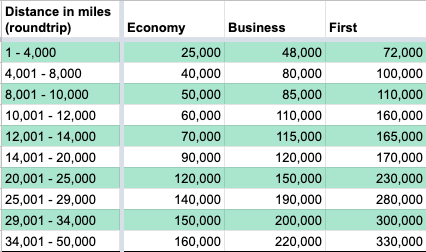
This is when you fly on any two or more partners, including JAL.
This is a distance based award chart. Add up the entire route (using GCMap) to get the distance in the first column, and then you can find the price for the class of service. Applicable to oneways as well (although generally a better value on roundtrips).
JAL Miles “Partner Award Chart”
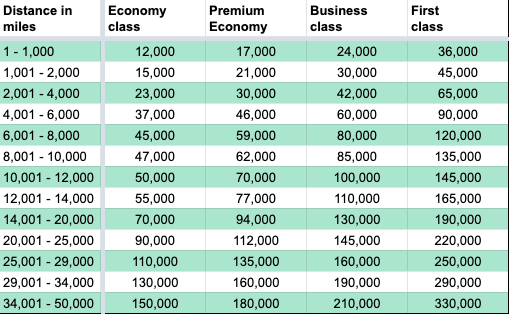
This is when you fly one single partner (which doesn’t include JAL).
Again, this is a distance based award chart. Add up the entire route (using GCMap) to get the distance in the first column, and then you can find the price for the class of service. Applicable to oneways as well (although generally a better value on roundtrips).
Comparing OneWorld vs Partner Award Chart:
This chart shows when the OneWorld award is more expensive. Positive numbers (generally in red) show that within this range, you get way less value using the OneWorld award chart and should try to use the Partner award chart.
Negative values (or green cells) indicate distance ranges where it would be better to use the OneWorld Award Chart. You can do this simply by making sure you fly two airlines.
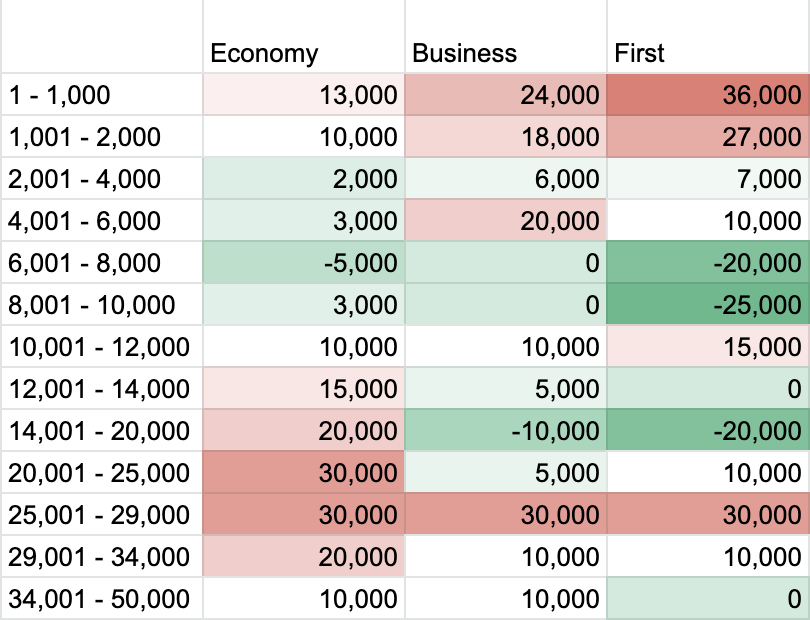
JAL Miles “JAL Award Chart” & Jetstar Japan
JAL Flights To/From Japan:
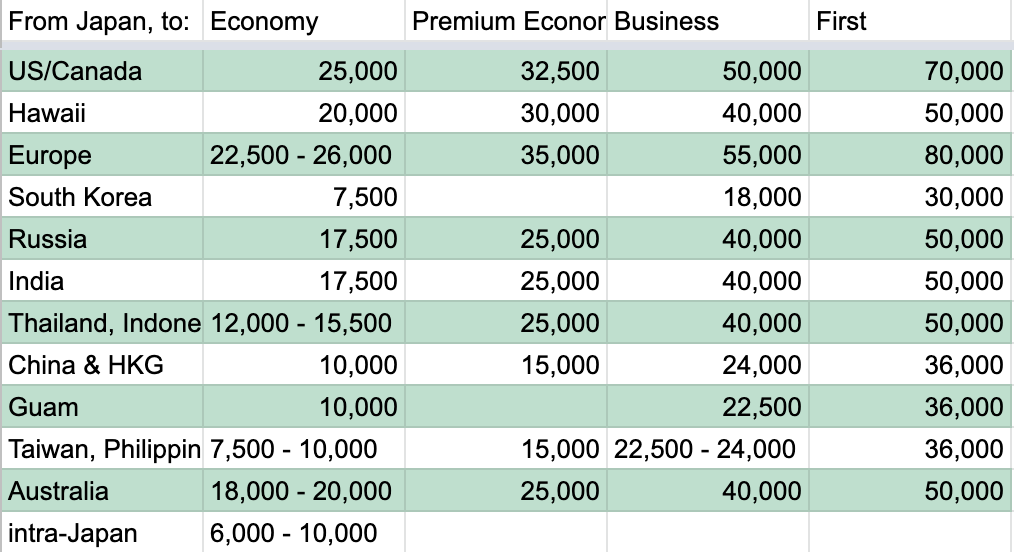
The above award chart is when you use JAL Miles to fly on JAL flights. They are based in Japan and all prices are therefore to/from Japan. To get the value to another region, you need to add up another segment.
The full versions of JAL & Jetstar Japan Award Charts here:
Map of JAL Award Flights (to/from Japan):
As you can see, there are a limited number of destinations you can reach with Japan Airlines.
Conclusion
That’s all for now, but I’ll be doing a follow up dissecting where to get the best value.



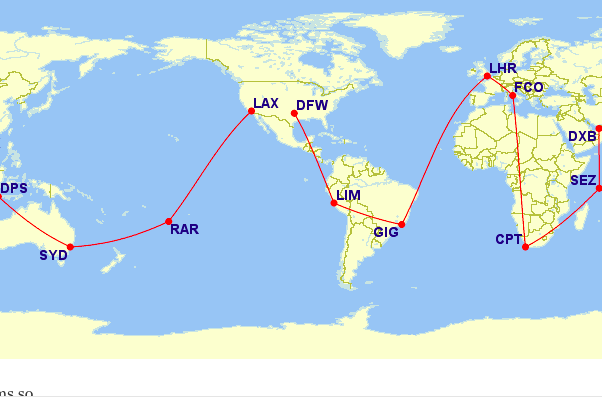
Excited to see you posting here! Really appreciate this blog but best of fortunes to you at the Points Guy…
We will miss all this great stuff Drew.
Best of luck in your fortunes. It’s a bittersweet moment for us.
Yay–TIF still lives. Thanks Drew.
Glad to see you still posting here. Will you be doing that beyond the followup post?
Using partner Alaska, you could start in Seattle and see Hawaii, San Diego and Cabo for only 39,000 miles in economy. The itinerary is 7,996 miles, putting it in the fifth zone of the award chart. The trip would fly SEA-HNL (stopover) LAX-SJC (Destination)-SAN(stopover)-SEA.